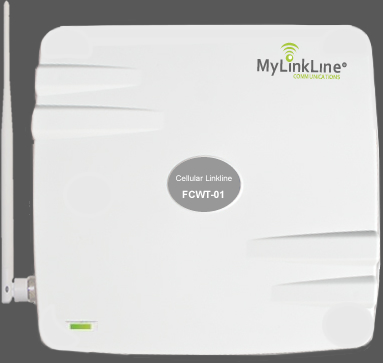9 Tips for Negotiating Cost-Effective Elevator Maintenance Contracts
Discover essential money-saving strategies for negotiating elevator maintenance contracts. Get expert tips that will save you money and avoid common mistakes.
Unlocking substantial cost savings through strategic negotiation of elevator maintenance contracts is a game-changing endeavor. These nine insightful tips provide a roadmap to optimize your elevator maintenance agreements, ensuring both financial benefits and smooth vertical transportation system functionality:
Tip 1: Leveraging Long-Term Elevator Maintenance Contracts to your Advantages
Consider embracing longer elevator maintenance contracts, such as a five-year agreement, to secure potential discounts. Explore a 5% cost reduction by committing to a five-year elevator maintenance contract. This mutually beneficial approach satisfies both parties and paves the way for a fruitful arrangement.
Selecting Elevator Maintenance Contracts to fit your needs
When contemplating the most suitable elevator maintenance contracts for your specific needs, it becomes imperative to acquaint yourself with the assortment of contract options accessible. This familiarity not only enhances the potential to save on costs but also facilitates the discovery of a tailored elevator maintenance contract that impeccably aligns with your building’s requisites.
The degree of risk you are poised to undertake invariably plays a pivotal role in determining the cost structure of the services rendered. It is worth noting that elevator companies typically furnish an array of four principal types of elevator maintenance contracts, each encompassing an array of coverage alternatives and the possibility of availing discounts.
The first type to delve into is the Full Maintenance Contract (FMC). Essentially, a Full Maintenance Contract is designed to delegate full accountability for the elevator equipment stipulated within the maintenance agreement to an elevator service company. This particular contract functions akin to an insurance policy, affording the manager the convenience of accurately budgeting for the cumulative annual costs, while simultaneously alleviating any apprehensions pertaining to elevator liability and potential exposure to claims in the aftermath of unforeseen accidents or injuries.
This reduction in liability emanates from the maintenance contractor’s comprehensive assumption of responsibility, extending to the determination of the requisite frequency of service visits aimed at preserving the secure operational state of the elevator system. Furthermore, in the unfortunate event of an accident, the onus of defending against claims relating to the incident is shouldered by the elevator maintenance company, which diligently endeavors to reinstate and uphold the safe operational condition.
The subsequent category to consider is the Parts, Oil, and Grease Contract (POG). This type of contract specifically enumerates the equipment elements that fall outside the purview of the agreement, encompassing components such as controllers, elevator machines, motor-generator sets, and cables, among others. The value derived from a POG contract hinges on its unequivocal stipulation of covered tasks, inclusive of parts supplied, along with the prescribed frequency of examinations and the responsiveness to troubleshooting calls.
However, it’s important to bear in mind that opting for a POG agreement can potentially entail an augmentation in administrative documentation. This arises from the necessity for property managers to seamlessly synchronize between the contract’s defined coverage scope and the potential execution of repairs through subsequent repair orders at a later juncture.
It’s noteworthy that certain maintenance entities are progressively veering away from offering this particular type of contract, primarily due to the escalating costs attributed to the integration of solid-state components.
Generally, maintenance companies extending this classification of agreement are inclined to present comparatively reduced monthly charges vis-à-vis the tariff associated with a comprehensive full maintenance contract. This, naturally, comes with a proportional reduction in coverage scope.
The Oil and Grease (OG) or Examination & Lubrication Contract constitutes yet another variant to factor into your deliberations. An OG contract encompasses routine lubrication of mobile components and minor adjustments that adhere to a predefined schedule.
In instances necessitating supplementary services, the elevator mechanic duly notifies the property manager, who subsequently undertakes the orchestration of the ensuing repairs, with the attendant costs borne by the building proprietor.
It’s important to acknowledge that while the cost outlay for an OG contract may appear comparatively modest on the surface, the inclusion of repairs invariably culminates in a substantiated elevation of the aggregate annual expenses. This confluence of factors engenders a greater degree of intricacy when attempting to formulate an annual budget.
Moreover, it’s imperative to recognize that OG contracts engender an augmented quantum of administrative documentation. The property manager shoulders the responsibility of harmonizing all repair-related undertakings with the maintenance provider.
In terms of liability, OG contracts extend the proprietor’s responsibility for effectuating the repair and replacement of parts, thereby accentuating the potential exposure to claims emanating from accidents or injuries. Notably, customer contentment and satisfaction with this particular classification of agreement tend to register at a relatively lower ebb.
Lastly, the Survey and Report Contract warrants consideration within this spectrum of contract alternatives. This variant is characterized by the periodic inspection of major equipment components at intervals ranging from quarterly to semi-annually or annually. It’s imperative to comprehend that the scope of this contract confines itself exclusively to inspections and does not encompass the ambit of maintenance, repair endeavors, or the disassembly of equipment that mandates the intervention of qualified elevator mechanics.
Recommendations pertaining to maintenance or replacements may be either executed by the building owner or entrusted to select contractors, with the overarching orchestration undertaken by the property manager. Importantly, the implementation of a Survey and Report Contract engenders a discernibly heightened challenge in extricating the building owner from potential liability ramifications in the eventuality of an accident.
In summary, when deliberating upon the most befitting elevator maintenance contract, an astute understanding of the available contract categories empowers effective decision-making. The spectrum spans from Full Maintenance Contracts that offer comprehensive coverage, through to Parts, Oil, and Grease Contracts with their stipulated inclusions, and Oil and Grease or Examination & Lubrication Contracts that entail routine servicing.
The array concludes with Survey and Report Contracts, which focus on inspection rather than hands-on maintenance. Each type bears distinct characteristics, implications, and administrative requisites, all of which must be meticulously evaluated against the specific needs and exigencies of your property. The resonance between the chosen contract and your building’s operational landscape holds the key to ensuring optimal safety, efficiency, and fiscal prudence in your elevator maintenance endeavors.
Tip 2: Maximizing Low Occupancy Opportunities
When significant building areas remain unoccupied, tap into low occupancy discounts ranging from 5% to 10%. These discounts yield substantial savings on elevator maintenance contract expenses, effectively addressing specific building needs while ensuring cost-effectiveness.
Tip 3: Synergizing Multi-Building Maintenance
Centralize elevator maintenance contracts across a portfolio of buildings to negotiate volume-based discounts (5% to 20%) based on elevator count. This strategic move enhances cost-efficiency, streamlines management, and optimizes expenses for multi-building properties.
Tip 4: Capitalizing on National-Account Benefits
Property managers overseeing extensive networks can unlock national account discounts for elevator maintenace contracts ranging from 15% to 35%. By consolidating elevator maintenance contracts, you streamline administration, capitalize on significant savings, and strengthen cost-effective practices.
Tip 5: Refining Annual Price Adjustments
Proactively negotiate elevator maintenance contracts annual price adjustments, limiting increases to a predetermined percentage (e.g., “not to exceed 3% per year”). Request written notice before implementing price hikes, enhancing transparency and budget predictability for minimized long-term costs.

Tip 6: Navigating Hold-Harmless Clauses
Prioritize elevator maintenance contracts and contractual protection by scrutinizing hold-harmless clauses. Avoid assuming responsibility for uncontrollable actions, safeguarding your financial well-being and contract integrity through careful analysis.
Tip 7: Transitioning to Cellular Elevator Phone Lines
Seize cost savings by replacing dedicated landlines with cellular elevator phone lines, leading to substantial savings.
Elevator Cellular Phone Line
How to eliminate the cost of a traditional elevator phone line and save 35% or more

Tip 8: Minimizing Trouble Call Costs
Empower building personnel to proactively address complaints before involving contractors, curtailing unnecessary service calls and optimizing resource utilization for cost-effective results.
Tip 9: Strategic Overtime Repair Management
Plan repairs during regular working hours to avert double-time charges associated with weekends and holidays. This foresighted approach minimizes disruptions and optimizes elevator maintenance contracts’ cost efficiency.
In Conclusion: Elevating Efficiency and Savings for elevator maintenance contracts
Adopt these ten expert negotiation tactics to proactively manage costs and enhance elevator maintenance contracts’ efficiency, safety, and performance. Make informed decisions aligned with budgetary goals and building requirements, forging a mutually beneficial partnership with your elevator service provider.

